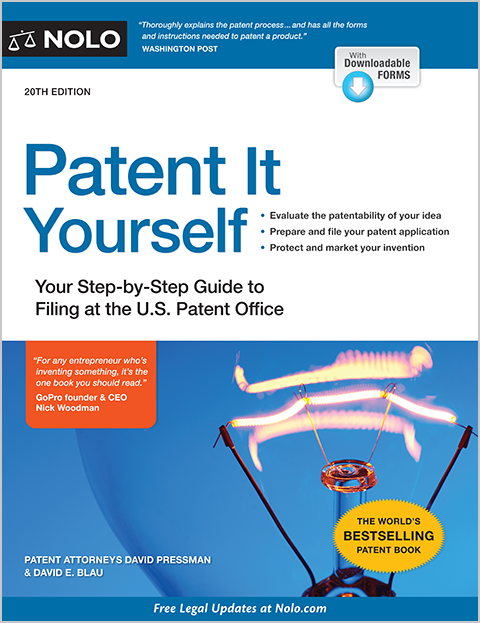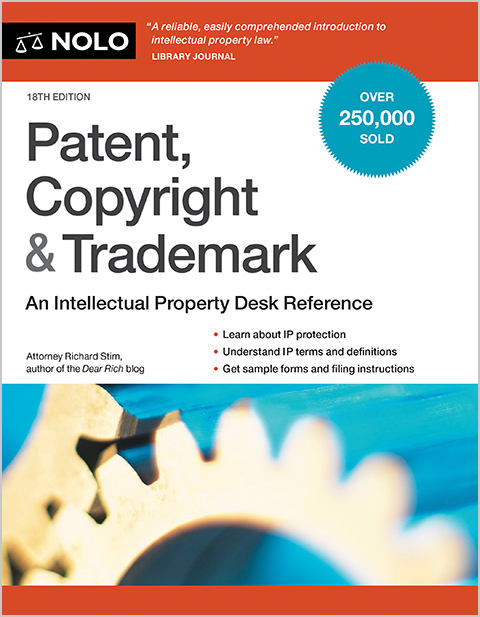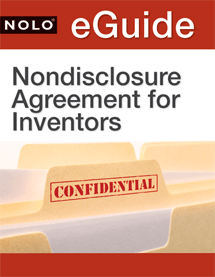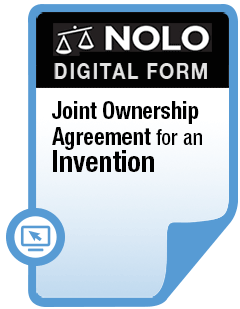Here are the basic steps to drafting and filing a patent application in the United States.
All patent applications in the United States are handled by the federal U.S. Patent & Trademark Office (USPTO). For instance, this agency evaluates patent applications and issues patents. This article provides an overview of that process, particularly meant for individuals considering embarking upon it.
Obtaining a patent is a lengthy and sometimes challenging process, and requires some preliminary research.
You must start by filing an application with the USPTO, which will be reviewed by patent examiners to ensure that it meets a series of qualifications. Before doing so, however, you must first:
- determine whether your invention has commercial potential
- make sure that it meets the requirements for patentability, and
- perform a thorough patent search to ensure that another person or entity does not already control the patent.
To learn about the requirements for patentability, see Qualifying for a Patent FAQs. To learn about patent searches, see Patent Searching Online.
Once you are confident that your invention is a good candidate for patent approval, you are ready to begin the patent application process.
The Patent Examiner: What to Expect
Each patent application filed with the USPTO goes through a rigorous examination process to ensure its completeness and validity. The application is assigned to a "patent examiner" (an employee of the USPTO), who inspects it to make sure that:
- the invention meets the statutory requirements for patentability, and
- the application itself follows the required USPTO format and language.
You and the examiner will exchange letters or phone calls until you reach an agreement about which parts of your invention the patent will cover, if any. This process typically takes between one and three years.
Do not be discouraged by the examiner's rigorous scrutiny of your application. Virtually no patent application, even if filed by a top-notch patent attorney, gets approved on the first submission. The application is not a "rubber stamp," such as when you submit a passport application or a name-change request. It is a lengthy process.
To reduce the number of problems, however, you need to carefully prepare your application, dotting your i's and crossing those t's. And while you do not necessarily need a patent attorney, the guidance of an expert patent lawyer is something to consider.
Main Parts of a Patent Application
The key elements of a patent are:
- the specification
- the claims
- the abstract, and
- the drawings.
The specification, with the help of the drawings, explains how to make and use the invention. The claims define the scope or boundaries of the patent. The application must also include an abstract that summarizes the invention.
The Specification
The specification is constructed of several elements. Collectively, these form a narrative that describes and distinguishes the invention. Every specification must describe the invention so that someone knowledgeable in the field of the invention (whether it be medicine, machinery, or something else) can make and use it without further experimentation.
The specification must also disclose the "best mode" of creating and using the invention. If the inventor knows of a better way (or "best mode" by which) to create the invention and fails to disclose it, that failure could result in the loss of patent rights.
The particular parts of the specification include:
- Title of the invention. Your title should be brief, but also technically accurate and descriptive.
- Background of the invention. You must include the field or subject matter of the invention and a description of all relevant prior inventions. Here's where thorough research pays off. When you refer to earlier inventions, point out specific problems that your invention solves.
- Brief summary of the invention. This is an overview of what you claim your invention can do. Show how your invention solves the problems you described in the background section.
- Detailed description of the invention. Provide a thorough description of the structure and operation of the invention. It must be complete enough that persons of ordinary skill in the field could follow it to make and use the invention.
The Claims of the Patent
Patent claims are detailed statements of exactly what your invention covers. Because the scope of your patent rights are based on what you declare in the claims, they are among the most important section of the application. Be certain that your claims are worded carefully and accurately to ensure proper protection.
The Drawings
You will also need to include drawings with your application, if they are necessary for showing how the invention works. Some applications (such as for pure chemicals) do not include a drawing, unless a process or chemical combination can be diagrammed by a flowchart.
Your drawings must illustrate every aspect of the invention specified in the claims. The USPTO has strict requirements for both claims and drawings, so be sure to study other patents in your field to become familiar with the format of these sections. All patent applications must include a drawing if the subject matter permits.
Filing Your Application
You can file your application with the USPTO by mail or electronically. In recent years, online filings have dramatically increased.
Filing by Mail
To make sure that your documents arrive safely at the USPTO, do the following:
- Make one or two copies of every single page you send.
- Obtain a receipt, by attaching a stamped self-addressed postcard to the first page of the documents. The postcard should identify in detail every document you submit. List how many pages and how many items each document type includes. Just saying "drawings" or "claims" won't help if an item is missing later on. Include the application filing date, the title of the invention, and the inventor's name.
The USPTO will stamp the postcard with a receipt date and an application number. Carefully check the returned card to make sure the USPTO received all the documents you sent.
Filing Electronically
The PTO's Electronic Filing System (EFS-Web) enables patent applications, amendments, and other documents to be filed online.
The EFS-Web requires time to master, and you'll need to convert your documents to Portable Data Format (PDF). If you're filing just one application, it might be easier and faster to mail a paper copy to the PTO.
EFS-Web has some practical advantages, however, allowing you to:
- file an application anytime and from anywhere with Internet access
- obtain instant confirmation of the PTO's receipt of documents
- send an application to the PTO without having to go to the Post Office to get an Express Mail receipt or having to wait for a postcard receipt, and
- file an application without having to prepare an application transmittal, a fee transmittal, receipt postcard, or check or Credit Card Payment Form (CCPF).
If you are ready to begin the patent application process, check out Patent It Yourself by David Pressman (Nolo). This readable book takes you through the entire patent process, providing scrupulously updated information and clear instructions on how to write and file your patent application.
Filing as a Small Entity
Fortunately, there are some discounts for smaller entities. Filers that qualify as "small entities" will receive fee discounts of approximately 50% on most USPTO fees, as reflected on the fee schedule.
What counts as a small entity? The regulations surrounding small entities are found in 37 CFR § 1.27. To qualify as a small entity you must either be:
- an individual
- a small business concern having no more than 500 employees (or affiliates)
- a university, or
- a 501(c)(3) nonprofit organization.
If you or your business qualify as a small entity, you need only verify that status by executing a declaration when paying the fee.
If, however, you are obligated to license or assign the patent to a bigger entity that does not qualify as a small entity, then you could not claim small entity status. A common example of this is when someone licenses a patent to a large company such as Microsoft or Apple. Improperly claiming small entity status would be considered inequitable conduct and could result in the loss of patent rights.
Filing as a Micro Entity
As the name suggests, micro entities are even smaller than small entities. Micro entities will find discounts of 60-75% on most USPTO fees, as shown on the fee schedule. To qualify as a micro entity, the filer must qualify as a small entity (per the above) and must also meet the following criteria:
- The filer has not been named as the inventor on a total of more than four utility patents (regular utility patents as opposed to provisional patent applications), design patents, or plant patents. This also does not include certain international applications and applications owned by a previous employer. In addition, the filer had a gross income in the previous year of less than three times the median household income reported by the Bureau of the Census. (See the USPTO website for current income limits). In the event that the patent application has been assigned to another entity, the assignee had to have a gross (not net) income of less than three times the U.S. median household income, or
- The majority of the patent filer's employment income is from an institution of higher learning, or the applicant has assigned, or is obliged to assign the patent to an institution of higher learning. This is a public or nonprofit accredited institution that admits post-secondary students for programs of not less than two years.
While small entity status has long been available, the micro entity status is newer, having been created in 2013 as part of the America Invents Act.
After Filing: USPTO Actions and Possible Responses
When the USPTO responds to a patent application, the response is called an "office action." The USPTO also issues office actions in response to trademark applications, which are not to be confused with patent-related office actions. The USPTO issues two main types of office actions, non-final and final, and your possible responses vary according to the type and substance of the office action.
Non-final Office Actions
It's highly unlikely that your patent application will be accepted (approved) on the first try. More likely, the USPTO will issue one or more non-final office actions that require a response from you. A non-final office action might relate to a defect in the application, or an issue with the patentability of your invention (such as being obvious or not novel). Your response should obviously address all issues raised by the examiner.
Final Office Actions
If your responses to non-final office actions don't resolve the issues raised by the examiner, the USPTO may issue a final office action. A final office action doesn't terminate your application, but your possible responses are limited. Your options include filing:
- an after final response that amends your application in ways the examiner indicates would make it (or certain claims within it) allowable
- a continuation application or a request for continued examination (RCE) that opens the application for further examination
For More Information
In addition to the references cited above, Nolo's patent law section includes many helpful articles on various aspects of patent law and the patent application process.
Talk to a Lawyer
Need a lawyer? Start here.
How it Works
- Briefly tell us about your case
- Provide your contact information
- Choose attorneys to contact you
- Briefly tell us about your case
- Provide your contact information
- Choose attorneys to contact you



